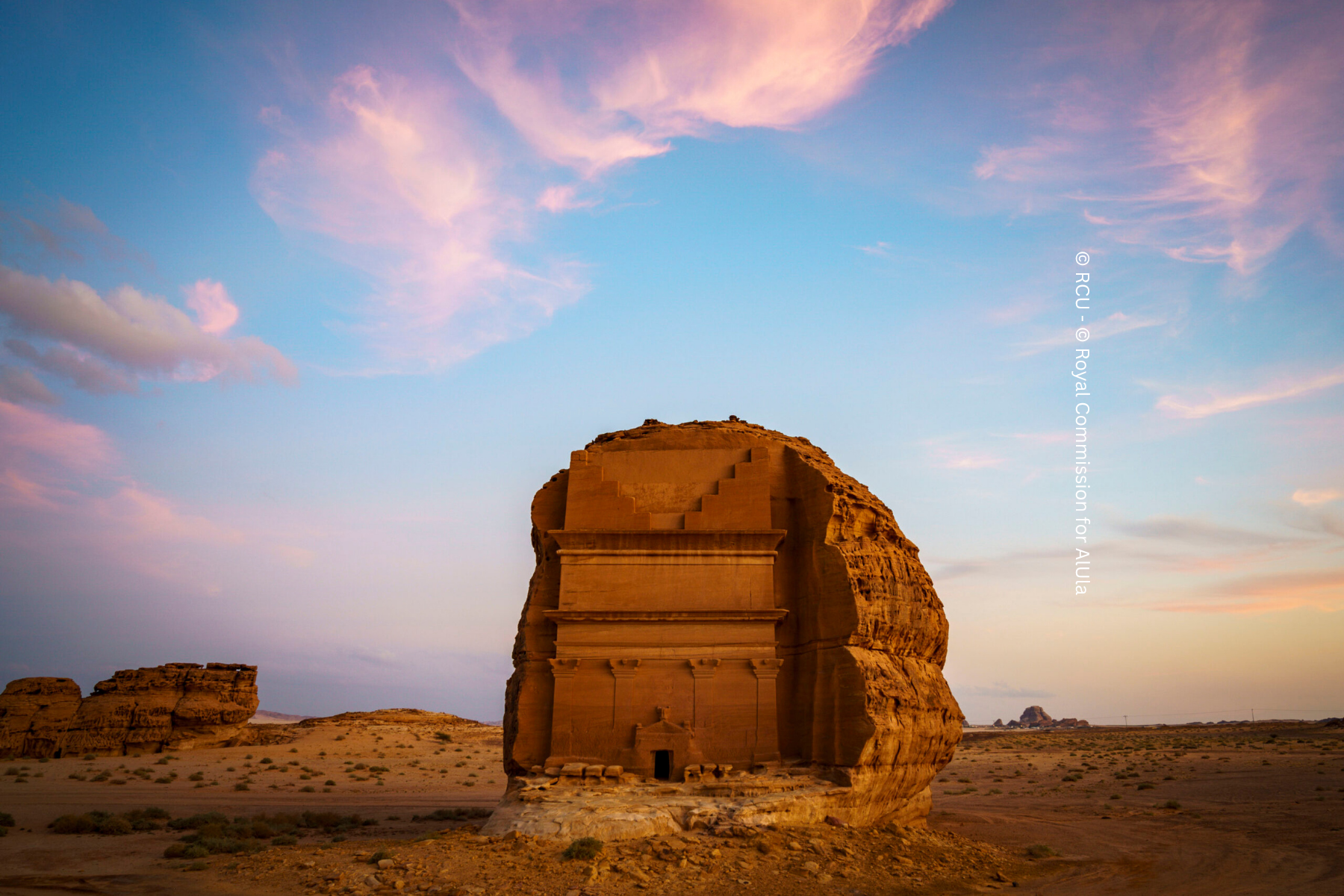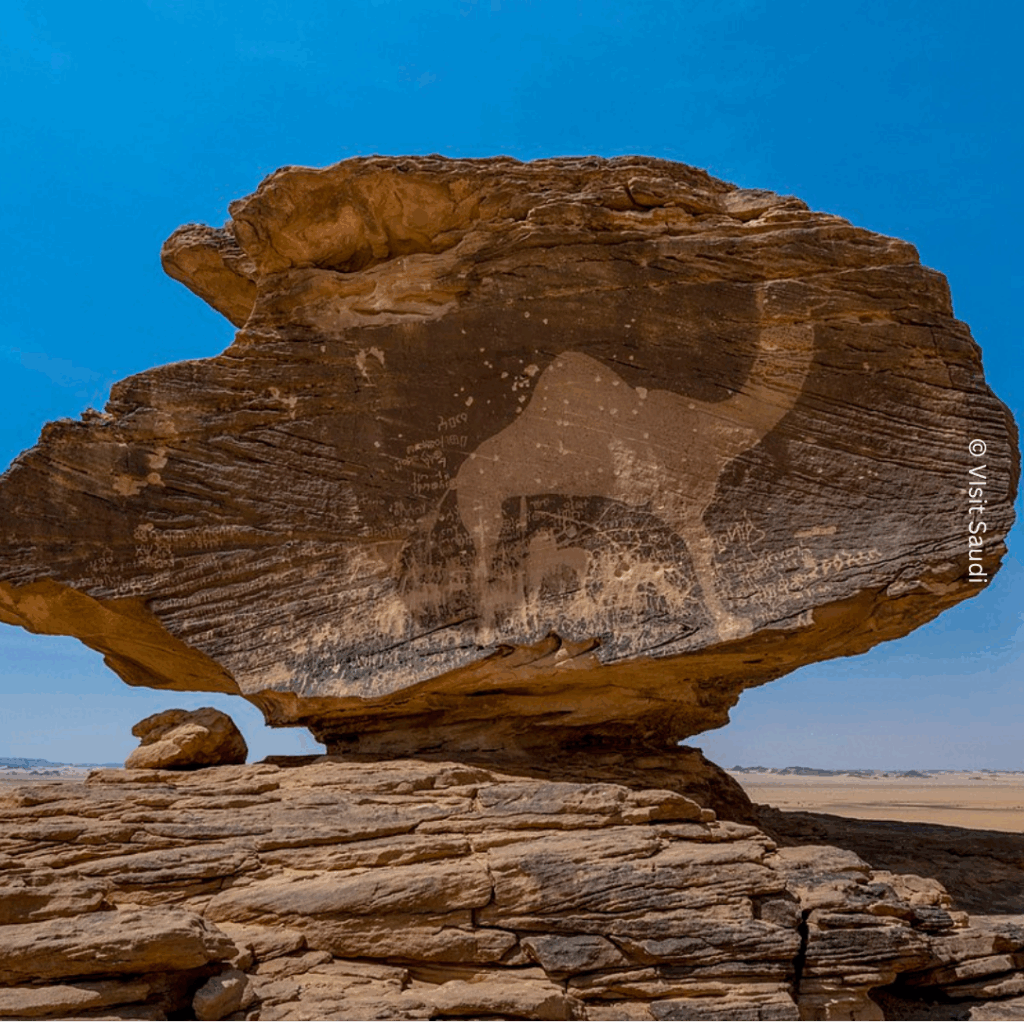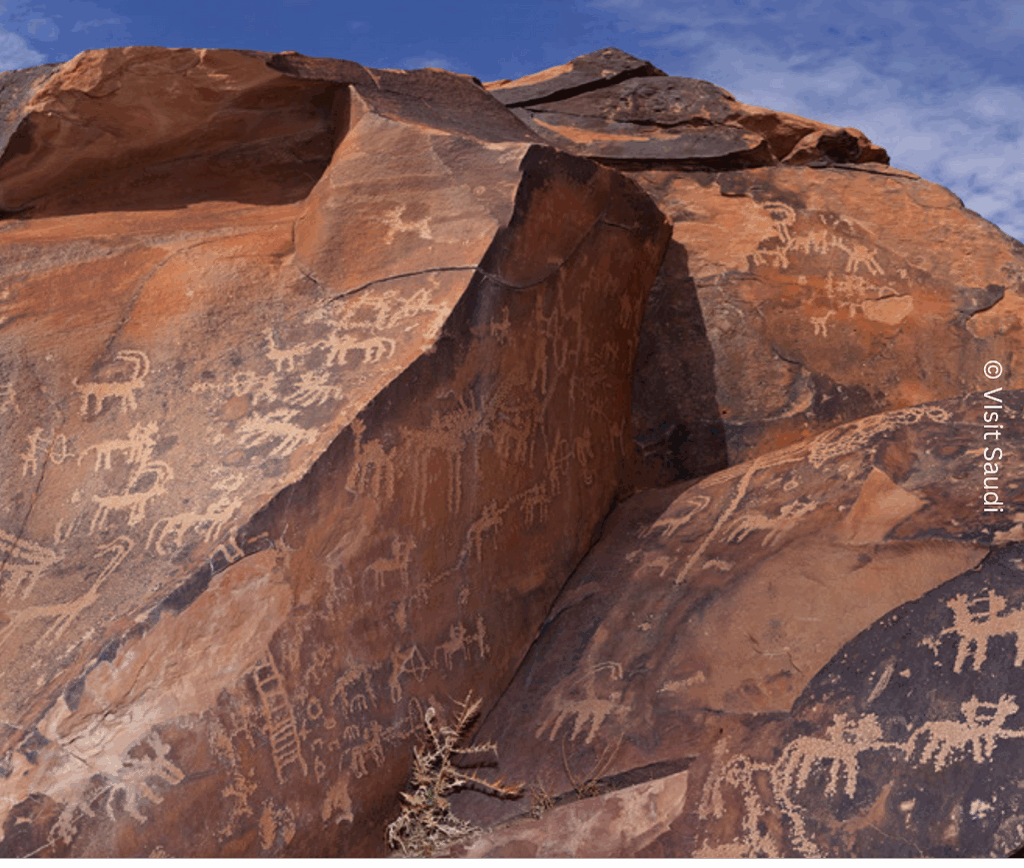At-Turaif District
This property was the first capital of the Saudi Dynasty, in the heart of the Arabian Peninsula, north-west of Riyadh. Founded in the 15th century, it bears witness to the Najdi architectural style, which is specific to the centre of the Arabian peninsula. In the 18th and early 19th century, its political and religious role increased, and the citadel at At-Turaif became the centre of the temporal power of the House of Saud and the spread of the Salafiyya reform inside the Muslim religion. The property includes the remains of many palaces and an urban ensemble built on the edge of the Wadi Hanifa Oasis.


Hegra Archaeological Site
The Hegra Archaeological Site (al-Hijr / Madā ͐ in Ṣāliḥ) is the first World Heritage property to be inscribed in Saudi Arabia. Located in the AlUla region of the northwestern part of the country, approximately 1,100 km from Riyadh, it was formerly known as Hegra and is the largest conserved site of the civilization of the Nabataeans south of Petra in Jordan. It features well-preserved monumental tombs with decorated facades dating from the 1st century BC to the 1st century AD. The site also features some 50 inscriptions of the pre-Nabataean period and some cave drawings. Hegra bears a unique testimony to Nabataean civilization. With its 111 monumental tombs, 94 of which are decorated, and water wells, the site is an outstanding example of the Nabataeans’ architectural accomplishment and hydraulic expertise.
Himā Cultural Area
Located near Najran in the southwest of Saudi Arabia, close to the Yemeni border, in an arid, mountainous area on one of the Arabian Peninsula’s ancient caravan routes, Ḥimā Cultural Area contains a substantial collection of rock art images depicting hunting, fauna, flora and lifestyles in a cultural continuity of 7,000 years. Travelers and armies camping on the site left a wealth of rock inscriptions and petroglyphs through the ages until the late 20th century, most of which are preserved in pristine condition. Inscriptions are in different scripts, including Musnad, South-Arabian, Thamudic, Greek and Arabic. The property and its buffer zone are also rich in unexcavated archaeological resources in the form of cairns, stone structures, interments, stone tool scatters and ancient wells. This location is at the oldest known toll station on an important ancient desert caravan route, where the wells of Bi’r Ḥimā date back at least 3,000 years and still produce fresh water.


Historic Jeddah
Al-Balad, (The Gate to Makkah) also known as the historic Jeddah district, is situated on the eastern shore of the Red Sea. From the 7th century AD it was established as a major port for Indian Ocean trade routes, channelling goods to Makkah. It was also the gateway for Muslim pilgrims to Makkah who arrived by sea. These twin roles saw the city develop into a thriving multicultural centre, characterized by a distinctive architectural tradition, including tower houses built in the late 19th century by the city’s mercantile elites, and combining Red Sea coastal coral building traditions with influences and crafts from along the trade routes.
Rock Art
This property in the Hail region includes two components situated in a desert landscape in northwestern Saudi Arabia, near the city of Hail: Jabal Umm Sinman at Jubbah and Jabal al-Manjor and Raat at Shuwaymis. A lake once situated at the foot of the Umm Sinman hill range that has now disappeared used to be a source of fresh water for people and animals in the southern part of the Great Narfoud Desert. The ancestors of today’s Arab population have left traces of their passages in numerous petroglyphs and inscriptions on the rock face. Jabal al-Manjor and Raat form the rocky escarpment of a wadi now covered in sand. They show numerous representations of human and animal figures covering 10,000 years of history.


Al-Faw
The Cultural Landscape of Al-Faw Archaeological Area is located in the southern part of Riyadh Province, near the edge of the Empty Quarter desert (Rub Al-Khali), approximately 700 km southwest of Riyadh. This site lies at a strategic point along the ancient trade routes of the Arabian Peninsula. The property was abruptly abandoned around the 5th century AD. Nearly 12,000 archaeological remains have been found, spanning from prehistoric times to the late pre-Islamic era, testifying to the successive occupation of three different populations and their adaptation to evolving environmental conditions. Archaeological features include the Palaeolithic and Neolithic tools of early people, tapered structures, cairns and circular constructions, the sacred mountain of Khashm Qaryah, rock carvings, funerary tumuli, forts/caravanserais, the oasis and its ancient water management system, and the vestiges of the city of Qaryat al-Faw.

